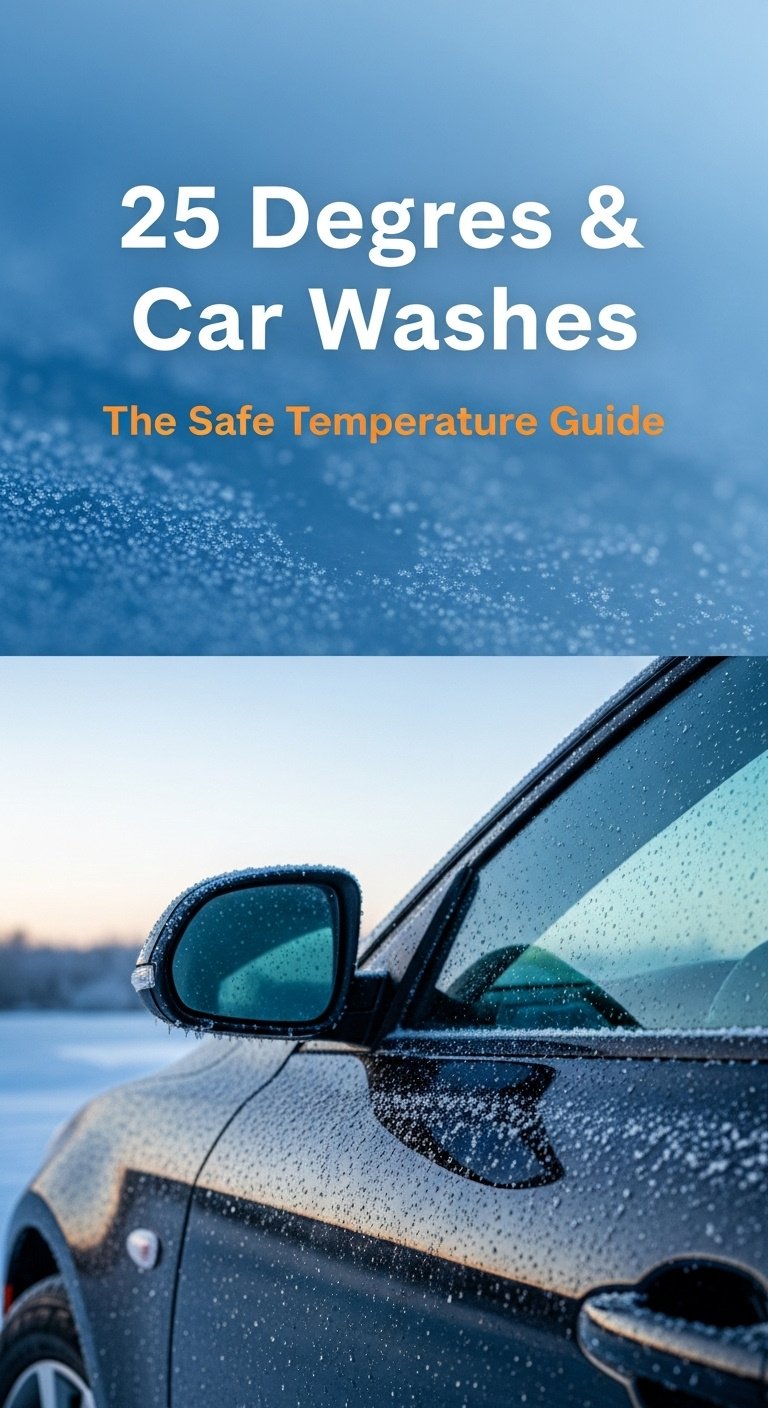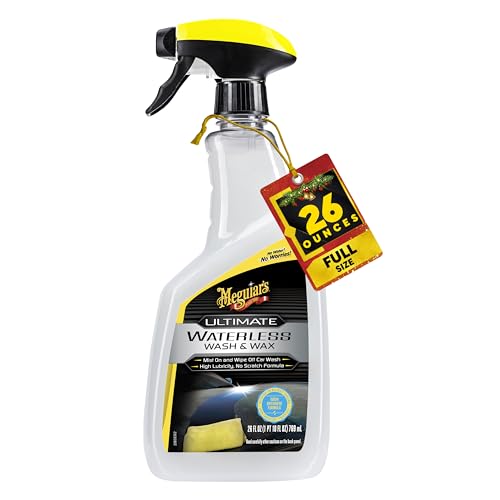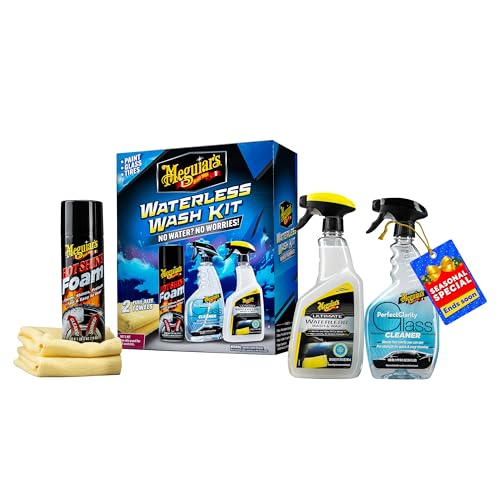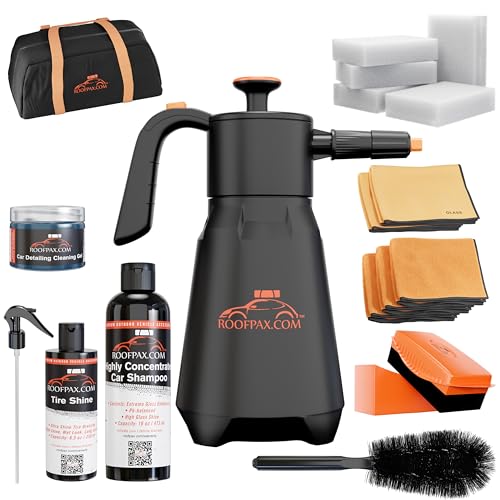When the temperature plummets, you’re faced with a classic winter dilemma: should you wash the corrosive road salt off your car, or is it simply too cold to risk it? You know that grime is bad for your paint, but the thought of creating a car-sized ice sculpture in your driveway is even worse. This guide will definitively solve that problem, explaining the precise temperature cutoff and the exact risks you face when asking, is 25 degrees too cold for car wash?
Based on extensive data and expert consensus, 25°F (-3.89°C) is too cold for a do-it-yourself car wash. Water freezes at 32°F (0°C), meaning a DIY wash at this temperature risks immediate ice formation, which can damage your vehicle and create unsafe conditions.
Leveraging a comprehensive analysis of automotive care guidelines, this guide unpacks the specific dangers of washing your car below freezing and provides proven, safe alternatives. We’ll explore why professional car washes are different, the ideal temperature for a home wash, and what to do when a full wash just isn’t an option.
Key Facts
- The Freezing Point is a Hard Stop: Water begins to freeze at 32°F (0°C). Any DIY washing below this temperature is highly discouraged because water will turn to ice on contact with your car’s cold surfaces.
- Frozen Components Cause Damage: According to sources like Erie Insurance and Firestone Complete Auto Care, one of the most common issues is water seeping into door seals, locks, and handles, then freezing solid, which can lead to torn rubber and broken mechanisms if forced open.
- Road Salt is a Major Threat: While cold weather washing is risky, it’s crucial to remove road salt. Data shows that salt accelerates rust and corrosion, making winter washing a necessary evil that must be performed safely.
- The “Safe Zone” for DIY Washing: The overwhelming consensus suggests waiting for a day when the temperature is at least 40°F (4.4°C), and ideally closer to 50°F (10°C), to safely wash your car at home.
- Professional Washes are Built for the Cold: Many professional facilities are equipped with heated bays and high-powered drying systems specifically designed to operate safely in freezing temperatures, making them the superior choice in winter.
The Verdict: Is 25°F Too Cold to Wash Your Car?

The direct answer to whether is 25 degrees too cold for car wash depends entirely on how you plan to wash it. For a vast majority of car owners, the answer is a firm yes.
Yes, 25°F (-3.89°C) is generally too cold to wash a car yourself at home. Water freezes at 32°F (0°C), and washing below this temperature poses significant risks. However, professional car washes with heated facilities may operate safely.
The fundamental reason is simple physics. At 25°F, you are a full seven degrees below the freezing point of water. Any water you spray on your vehicle won’t have time to be properly wiped away; it will begin to freeze on contact, trapping dirt against your paint and seeping into cracks and crevices where it can cause real damage. So why does this distinction between a home wash and a professional one matter so much?
Why Washing a Car Below Freezing is a Bad Idea: The Top 5 Risks
Attempting a car wash when the temperature is 25°F is not just ineffective; it’s actively hazardous to your vehicle and your personal safety. The core issue is that water freezing on your car and on the ground creates a cascade of problems. Understanding these specific dangers underscores why waiting for the right conditions is the smartest choice. Washing a car below 32°F risks instant ice formation that can scratch paint, freeze doors and locks shut, create dangerous slippery surfaces, and even crack glass from rapid temperature changes.
Here are the top five risks you face.
1. Instant Ice Formation on Surfaces
At 25°F, the water from your hose or pressure washer will freeze almost instantly upon hitting your car’s cold metal and glass panels. This layer of ice can trap dirt, salt, and grit directly against your car’s clear coat. Trying to remove this ice with a scraper or even a towel can easily lead to deep scratches and swirl marks in your paint.

2. Frozen Doors, Locks, and Seals
This is one of the most common and frustrating consequences. Water inevitably runs into the channels around your doors, windows, trunk, and even your gas cap door. When it freezes, it acts like a powerful glue, sealing these components shut. Pro Tip: Remember, forcing a frozen door open can tear the rubber seals, leading to expensive repairs and potential water leaks down the road.
3. Paint, Glass, and Undercarriage Damage
Water that seeps into existing microscopic cracks in your paint will expand as it freezes. This process of ‘ice expansion’ can widen those cracks, leading to clear coat failure and rust over time. Furthermore, using warm or hot water on a freezing cold windshield can cause ‘thermal shock,’ a rapid expansion or contraction that can lead to a stress crack.
4. Ineffective Cleaning and Product Failure
Car wash soaps and detergents are formulated to work within a specific temperature range. In freezing cold, they can become thick, fail to foam properly, and leave behind a sticky residue. Similarly, any wax or sealant you have on your car can be stripped away, and applying a new coat is impossible, as it won’t cure correctly in the cold.
5. Severe Safety Hazards
Beyond the risks to your vehicle, there’s a significant risk to you. The runoff from your wash will create a sheet of ice on your driveway or the floor of a self-service bay. This creates an extremely dangerous slip-and-fall hazard. Data from car wash forums highlights that self-service bays can become particularly treacherous as pit grates collect ice, posing a serious safety concern.
Risk 1: Frozen Doors, Locks, and Seals
When you wash your car in temperatures like 25°F, you are setting the stage for being locked out. As highlighted by automotive safety resources from Erie Insurance, this is a frequent and costly mistake.
* How it Happens: Water from the wash runs down your windows and along the door jambs. It seeps into the tiny gaps around the rubber weather stripping and inside the keyhole and handle mechanisms.
* The Freeze: As the temperature remains below 32°F, this trapped water freezes solid, effectively gluing the rubber seal to the car’s frame and seizing the internal lock tumblers.
* The Damage: When you pull on the handle, you’re not just fighting ice; you’re pulling against the delicate rubber seal, which can easily tear. Trying to force a key into a frozen lock can break the key or damage the lock cylinder itself, leading to an expensive repair bill.
Risk 2: Paint, Glass, and Undercarriage Damage
The damage from a cold-weather wash goes beyond the surface. It can accelerate the wear and tear on your car’s most critical protective layers.
The science is straightforward: water expands by about 9% when it freezes. When this happens in the tiny, invisible cracks of your car’s paint, the force of ‘ice expansion’ acts like a small wedge, pushing the crack wider. Over time, this allows moisture and salt to reach the metal underneath, which is the primary cause of rust. Applying warm water to a freezing windshield creates a drastic temperature differential, or ‘thermal shock’, which can cause the glass to crack. Quick Fact: Dirt and road salt trapped under a layer of ice can etch into your car’s clear coat as if it were sandpaper.
The Safe Way to Wash Your Car in Winter 2025
Just because it’s cold doesn’t mean you have to drive a salt-caked car until spring. The key is to wash it the smart way. Removing corrosive road salt is essential for preventing rust, so finding a safe method is critical for long-term vehicle health. Your decision should be based on the available temperature and resources.
Here is a simple decision guide to help you choose the best course of action.
| Method | Safe Temperature Range | Key Precaution |
|---|---|---|
| Professional Automatic Wash | Can operate below 32°F (0°C) | Ensure it has a high-power touchless dryer. |
| DIY Home Wash (Pressure Washer) | 40°F (4.4°C) or warmer | Dry ALL door seals and locks thoroughly. |
| Waterless Wash / Quick Detailer | Any temperature (in a garage) | Best for light dirt and spot-cleaning salt. |
Regardless of the method, here are some universal tips for a successful winter wash:
* Focus on the Undercarriage: This is where the most salt and grime accumulate. If using a professional wash, choose one with an undercarriage spray.
* Dry, Dry, Dry: This is the most critical step. Use a clean microfiber towel to dry door jambs, rubber seals, locks, handles, and mirrors to prevent freezing.
* Protect Before Winter: Applying a quality wax or paint sealant in the fall creates a protective barrier that makes washing off salt and dirt much easier all winter long.
Have you checked if your local professional car wash offers an undercarriage rinse to tackle road salt?

Option 1: Use a Professional Car Wash
When the temperature is as low as 25°F, using a professional car wash is unequivocally the safest and most effective option. These facilities are designed to operate in cold weather, mitigating all the major risks associated with a DIY wash.
* Heated Bays: The wash tunnel is kept above freezing, meaning the water and cleaning agents work effectively and won’t freeze on your car during the wash cycle.
* High-Power Dryers: This is the game-changer. Powerful blowers at the exit remove the vast majority of water from the vehicle’s surface, drastically reducing the risk of your doors and locks freezing shut on the drive home.
* Salt Removal: Many professional washes, especially touchless ones, offer targeted undercarriage sprays that are essential for blasting away the corrosive salt that causes rust.
Option 2: Wait for the Right Day and Time
If you prefer to wash your car yourself, patience is your greatest tool. The consensus among automotive detailers and experts is clear: wait for the weather to cooperate.
For a DIY wash, wait for a day when the temperature is above freezing, ideally 40°F (4.4°C) or warmer. Washing in the midday sun provides additional warmth to aid in drying.
Washing at 40°F gives you a crucial temperature buffer above freezing. This ensures that water is less likely to freeze in crevices before you have a chance to dry it. Pro Tip: Washing in the midday sun not only gives you more warmth but also helps speed up the crucial drying process before temperatures drop again.
What If You Can’t Wash Your Car? Alternative Cleaning Methods
Sometimes, a prolonged cold snap means neither a professional wash nor a DIY wash is feasible. However, you can’t let corrosive road salt sit on your paint for weeks. In these situations, alternative methods can bridge the gap and protect your vehicle.
* Waterless Car Wash Products: These are spray-on solutions that use high-lubricity formulas to encapsulate dirt, allowing you to wipe it away safely with a microfiber towel. They are excellent for removing light layers of dirt and salt without a single drop of water.
* Quick Detailers: A quick detailer spray is perfect for spot-cleaning. If you notice a patch of salt spray on a door panel, you can use a quick detailer to safely remove it before it can do damage. This is a great way to maintain your car’s finish between proper washes.
For those times when a full wash is impossible, having a high-quality waterless wash kit on hand is the perfect solution for safely removing harmful road salt and grime.
FAQs About Washing Your Car in the Cold
What is the absolute lowest temperature you should wash a car?
The absolute cutoff point is 32°F (0°C). Below this temperature, water begins to freeze, making any DIY car wash unsafe and ineffective. To be safe and ensure cleaning products work properly, most experts recommend waiting until it is at least 40°F (4.4°C).
Can I go through an automatic car wash in 30 degree weather?
Yes, you can typically use an automatic car wash in 30°F weather, provided it has a good drying system. The main risk shifts from the wash itself to residual water freezing on your drive home. A high-quality touchless dryer is essential to remove most of the moisture and prevent frozen doors or locks.
How can I prevent my car doors from freezing shut after a winter car wash?
Preventing frozen doors is all about thorough drying. Immediately after the wash is complete, take a few minutes to perform these steps:
1. Use a clean, dry microfiber towel.
2. Wipe down all the black rubber seals around every door and the trunk.
3. Pay special attention to drying around door handles, keyholes, and side mirrors.
Is it more important to wash road salt off or wait for a warmer day?
This is a strategic choice. While removing corrosive road salt is crucial for preventing rust, it’s better to wait for a warmer day (above 32°F) or use a professional heated wash rather than risk damaging your car by washing it in freezing temperatures. A few days of salt is less harmful than a cracked windshield or a torn door seal.
Final Summary: Key Takeaways for Winter Car Washing
Navigating car care in the winter ultimately comes down to making smart, informed decisions. While the question of is 25 degrees too cold for car wash seems simple, the right answer depends on prioritizing your vehicle’s safety and your own. By understanding the risks of freezing water and choosing the right method for the conditions, you can effectively combat corrosive road salt and keep your car looking its best without causing unintended damage.
Here are the most critical points to remember:
* Below 32°F is a No-Go for DIY: Never attempt to wash your car at home with a hose or pressure washer if the temperature is at or below the freezing point of 32°F (0°C).
* Professionals are Your Best Bet in the Cold: When temperatures are low, always opt for a professional car wash with a heated tunnel and, most importantly, a powerful air-drying system.
* Drying is Non-Negotiable: After any winter wash, your number one priority is to thoroughly dry all door seals, jambs, locks, and handles with a microfiber towel to prevent them from freezing shut.
Armed with this knowledge, you can now confidently decide how to keep your car clean and protected all winter long.
Last update on 2025-11-27 / Affiliate links / Images from Amazon Product Advertising API










